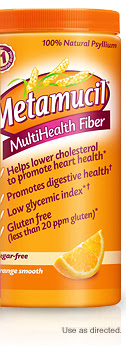Most people spend 8 hours or more at the office per day during the week. If this is true for you, it also means you’re spending a significant portion of your week away from your own kitchen. If you’re concerned about sticking to a healthy diet while you’re at work, there are a variety of nutritious foods — including vegetables, fruits, lean deli meats, whole-grain bread , reduced-fat cheeses, and nuts and seeds — you can easily pack for lunches and snacks to enjoy during the day.
- Pack your lunch. With a well-insulated lunch bag or lunchbox, a thermos, and some high-quality leakproof plastic containers, you can bring anything from soups and salads to sandwiches, fresh fruit, and nonfat plain Greek yogurt to the office. If you don’t eat breakfast at home, pack pre-cooked steel-cut oatmeal in a microwavable container or a couple of hard-boiled eggs. For lunch, prepare a sandwich using, lean, reduced-sodium deli meats like boiled ham, sliced chicken or turkey breast, lean roast beef, smoked ham, or smoked turkey breast, and reduced-fat cheese, lettuce, and tomato, if desired (add mayo, mustard, horseradish or another condiment just before eating). If you expect to work overtime, bring a dinner dish to heat up.
- Avoid the vending machine. Vending machines are usually filled with chips, cookies, candies, and other processed foods you should always stay away from. To combat mid-morning and mid-afternoon cravings, come to the office prepared with two healthy snacks. The most satisfying and energizing snacks contain some fiber-rich good carbohydrates and protein. Pack a handful of almonds, cashews, pumpkin seeds, soy nuts, or dry-roasted edamame or cut up some celery sticks or bell peppers or jícama to dip into a small individual container of hummus. Salsa is another good option for dipping. Or enjoy a piece of fruit with some fat-free or reduced-fat yogurt or cottage cheese.
- Organize a soup club. Flavorful, hearty, and satisfying, soups make the perfect lunch or snack. Consider getting some of your co-workers together and starting a soup club, where everyone in the club can share their favorite healthy recipes for hot or chilled soups and take turns preparing them for the office on certain days of the week. Set ground rules for the ingredients, like using lower-sodium chicken, beef, or vegetable broth, lean protein, and as many nutrient-dense, fiber-rich good carbs as possible, including a wide variety of vegetables and legumes — and whole grains and even fruits. Also make sure only fat-free or reduced-fat dairy is used. It’s a fun way to meet people in the company and build your recipe repertoire.
- Highlight healthy options on take-out menus. If busy mornings leave you with no time to prepare lunch or late nights at the office have you resorting to ordering out, spend some time circling or highlighting the healthy meal options on your favorite restaurant take-out menus. Whatever cuisine you enjoy, whether it's Chinese, Thai, Mexican, or American, always stay away from foods made with high-fat sauces and anything fried.
For appetizers, choose a healthy soup or salad. For a main dish, stick to lean protein, including lean beef, fish and shellfish, turkey and chicken breast (remove the skin), and pork loin.
For sides, choose steamed or grilled vegetables or brown rice or whole-wheat couscous, for example, to complement your meal. Or for a lighter meal select a salad topped with grilled chicken or turkey and veggies, or a whole-wheat pita or wrap, or an omelet with a healthy filling. For a beverage, choose seltzer or a sugar-free caffeinated or decaffeinated drink.











